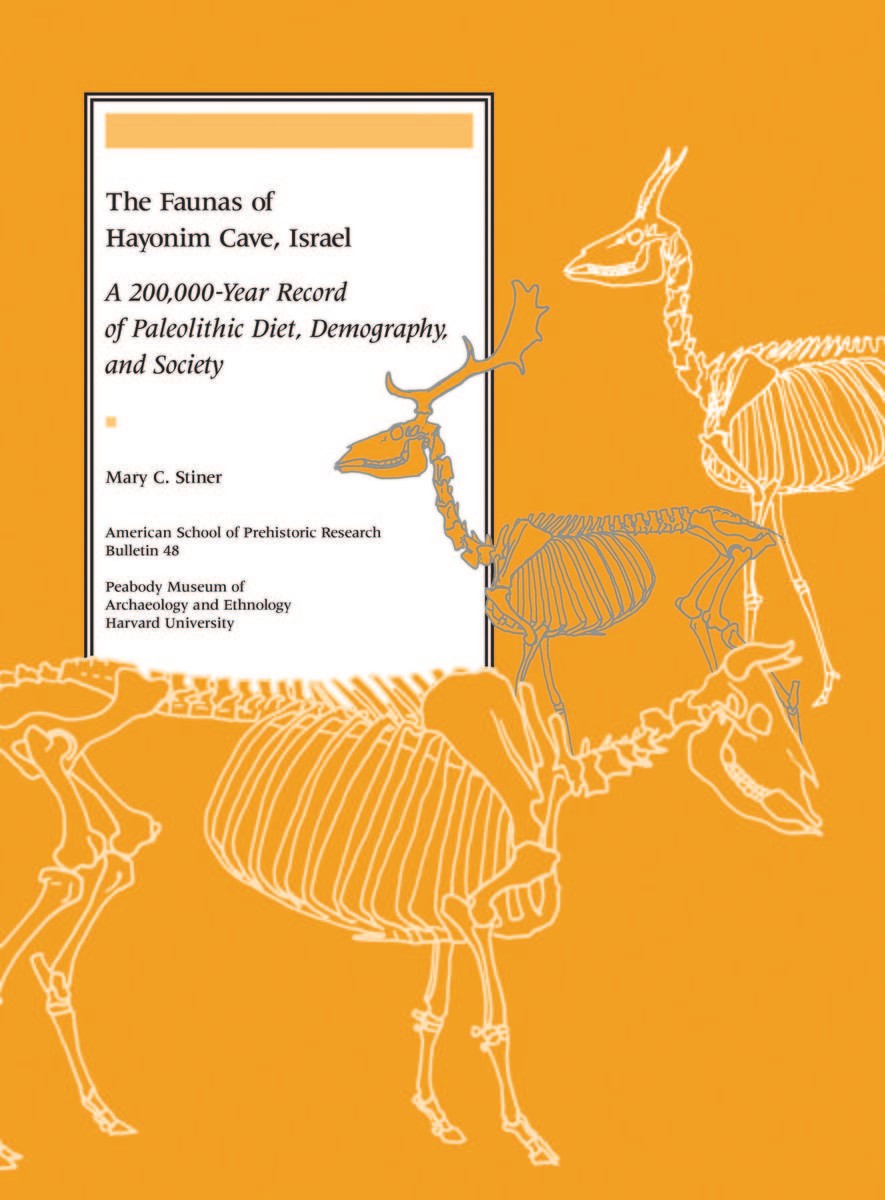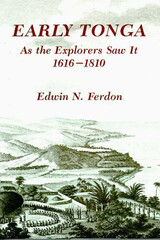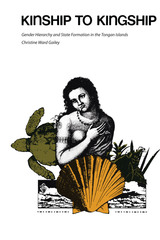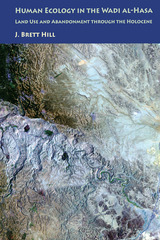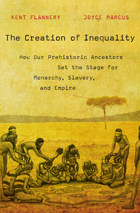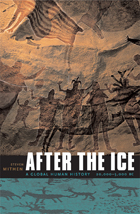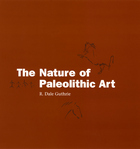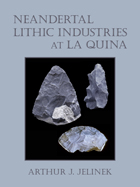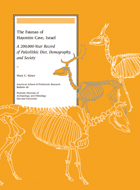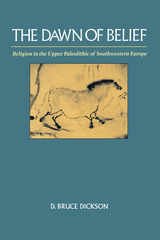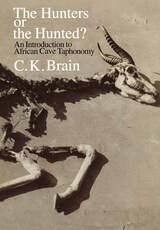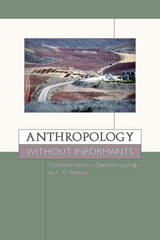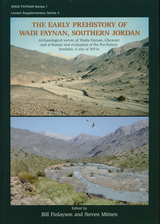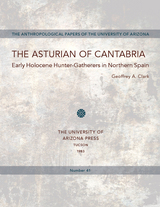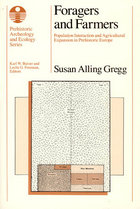The Faunas of Hayonim Cave, Israel: A 200,000-Year Record of Paleolithic Diet, Demography, and Society
The Faunas of Hayonim Cave, Israel: A 200,000-Year Record of Paleolithic Diet, Demography, and Society
by Mary C. Stiner and Ofer Bar-Yosef
Harvard University Press, 2005
Paper: 978-0-87365-552-1
Library of Congress Classification GN772.2.M6S85 2005
Dewey Decimal Classification 933
Paper: 978-0-87365-552-1
Library of Congress Classification GN772.2.M6S85 2005
Dewey Decimal Classification 933
ABOUT THIS BOOK | REVIEWS | TOC
ABOUT THIS BOOK
A decade of zooarchaeological fieldwork (1992-2001) went into Mary Stiner's pathbreaking analysis of changes in human ecology from the early Mousterian period through the end of Paleolithic cultures in the Levant. Stiner employs a comparative approach to understanding early human behavioral and environmental change, based on a detailed study of fourteen bone assemblages from Hayonim Cave and Meged Rockshelter in Israel's Galilee. Principally anthropological in outlook, Stiner's analysis also integrates chemistry, foraging and population ecology, vertebrate paleontology, and biogeography. Her research focuses first on the formation history, or taphonomy, of bone accumulations, and second on questions about the economic behaviors of early humans, including the early development of human adaptations for hunting large prey and the relative "footprint" of humans in Pleistocene ecosystems of the Levant.
REVIEWS
Superb...Stiner's work raises exciting new possibilities for monitoring Late Pleistocene changes in human population size, and particularly for identifying population bottlenecks that may have shaped the genetic makeup of modern humans.
-- John D. Speth, Museum of Anthropology, University of Michigan, Ann Arbor
-- John D. Speth, Museum of Anthropology, University of Michigan, Ann Arbor
TABLE OF CONTENTS
Contents List of Figures 000 List of Tables 000 Preface, by Ofer Bar-Yosef 000 Acknowledgments 000 1 Goals and Approaches 000 Background to the Issues 000 The Sites and Excavations 000 The Wadi Meged Faunal Samples 000 Comparisons with Kebara Cave 000 Bone Recovery 000 Taphonomic Approaches 000 Ecological and Economic Approaches 000 2 Archaeological Background to Hayonim Cave and Meged Rockshelter 000 Ofer Bar-Yosef, Anna Belfer-Cohen, Paul Goldberg, Steven L. Kuhn, Liliane Meignen, Bernard Vandermeersch, and Stephen Weiner The Region 000 Hayonim Cave and Its Excavation 000 Excavation Techniques 000 Stratigraphy 000 Mineralogy 000 Site Formation Processes 000 Dating the Cultural Sequence in Hayonim Cave 000 Hayonim Cave: Interim Summary of the Cultural Sequence 000 The Natufian, Kebaran, and Aurignacian Occupations 000 The Mousterian in the Levantine Context 000 Meged Rockshelter and Its Excavation 000 Age of the Deposits 000 The Lithic Assemblages 000 The Faunal and Ornament Assemblages 000 Meged Rockshelter: Interim Summary of the Cultural Sequence 000 3 Experiments in Fragmentation and Diagenesis of Bone and Shell 000 Mary C. Stiner, Ofer Bar-Yosef, Steven L. Kuhn, and Stephen Weiner Background to the Experiments: Chemical versus Mechanical Destruction 000 Fourier-Transform Infrared Spectroscopy 000 Experiments in Burning, Fragmentation, and Mineral Recrystallization 000 Materials, Methods, and Fire Setup 000 Results for Bone Mineral Recrystallization and Burn Color 000 Results for Bone Fragmentation and Burning Intensity 000 Results for Burning of Buried Bone 000 Infrared Spectra of Fresh and Burned Mollusk Shells 000 Overlapping Signatures of Burning, Weathering, and Fossilization in Bone 000 Discussion 000 4 Bone, Ash, and Shell Preservation in Hayonim Cave 000 Mary C. Stiner, Steven L. Kuhn, Todd A. Surovell, Paul Goldberg, Amy V. Margaris, Liliane Meignen, Stephen Weiner, and Ofer Bar-Yosef Archaeological Distributions 000 Two Hypotheses for the Bone Distributions in Layer E 000 Infrared and Macroscopic Methods 000 Infrared Spectroscopy of Bones and Sediments 000 Macroscopic Analyses of Bone 000 Results for Sediment Mineralogy in Relation to Bone Abundance 000 Bone Mineral Condition Relative to Specimen Surface Area 000 Results for Bone Condition in Relation to Bone Abundance 000 What Was the Origin of the Bones in the Bone-Poor Zone? 000 Evaluating the Extent of Bioturbation 000 Sedimentation, Compaction, and Human Occupation Intensity 000 Discussion 000 5 Vertebrate Taphonomy and Evidence of Human Modification 000 Methods and Variables 000 Density-Mediated Skeletal Attrition 000 A Comparison of Teeth and Cranial Bone 000 Bone Survivorship versus Bulk Bone Density 000 Biases in the Representation of Limb Bone Ends versus Shafts 000 Macrodamage Patterns 000 Damage to Reptile Remains 000 Damage to Bird Remains 000 Damage to Small Mammal Remains 000 Damage to Carnivore Remains 000 Damage to Ungulate Remains 000 Summary of Assemblage Formation Histories 000 Butchering and Marrow Processing 000 Numbers of Bones versus Stone Artifacts in Mousterian Units 000 6 Mediterranean Ecology and Species Diversity 000 Vegetation 000 Life Zones, Ecological Quadrants, and the Wadi Meged 000 Causes of Diversity in the Mediterranean Basin 000 Diversity and History of the Major Animal Groups 000 Reptiles and Amphibians 000 Birds 000 Mammals 000 Species in the Wadi Meged Archaeofaunas 000 Large Mammals 000 Carnivora 000 Ungulates and Megafauna 000 Small Animals 000 Reptiles 000 Small Mammals 000 Birds 000 Micromammals 000 Summary 000 7 Paleocommunities and Trends in Species as Prey 000 Zooarchaeological Methods: Identification and Quantification 000 Trends in Species Abundance 000 Species Trends Based on Percentages of NISP 000 Trends in Prey Importance as a Function of Biomass 000 Faunal Correlations and Indexes 000 Detrended Comparisons of Gazelle, Fallow Deer, and Tortoise Abundance 000 Tortoise Diminution, Population Structure, and Morphology 000 Diminution Trend 000 Age Structure Distortion (Skewing) 000 Tortoise Sex Ratios 000 What Sort of Tortoise? Biogeography and Morphology 000 Conclusion 000 8 Computer Simulation Modeling of Small Game Predator-Prey Dynamics 000 Mary C. Stiner, Natalie D. Munro, and Todd A. Surovell Small Game Trends across the Mediterranean Rim 000 Corroboration from Size Diminution in Slow-Growing Prey 000 Critical Variables in Human Predator/Small Prey Interactions 000 Predator Avoidance Mechanisms 000 Prey Maturation Rates 000 Simulations of Predation on Tortoises, Hares, and Partridges 000 Simulation Model Design: High and Low Growth Conditions 000 Tortoises 000 Partridges 000 Hares 000 Differences in Prey Population Resilience 000 Links between Predator Pressure and Predator Population Density 000 9 Prey Diversity and Changes in Human Dietary Breadth 000 Historical Review 000 Theoretical Expectations for Changes in Dietary Breadth 000 Measuring Variation in Dietary Breadth 000 Trends in Dietary Breadth in Mediterranean Italy, Turkey, and Israel 000 The Study Samples 000 Results as a Function of Prey Type Groupings 000 Implications of "Sensitive Species" for Prey Ranking Systems 000 Evidence for the Broad Spectrum Revolution 000 Summary 000 10 Food Utility, Attrition, and Transport of Ungulate Body Parts 000 In Situ Attrition and Body Part Profiling Techniques 000 Comparisons across Major Bone Macrostructure Classes 000 Comparisons within a Single Bone Macrostructure Class 000 The "Anatomical Regions" Profiling Technique 000 Test of Density Range Correspondence among Anatomical Regions 000 Ramifications 000 Body Part Profiles for the Wadi Meged Ungulates 000 Indexed Food Utility and Density Correlations 000 Intercorrelations among Reference Data Sets 000 Results for the Wadi Meged Ungulates 000 Conclusions about Procurement and Transport Strategies 000 11 Evidence of Large Game Hunting from Ungulate Mortality Patterns 000 Mortality Patterns from Dental Eruption and Wear 000 Potential Taphonomic Biases 000 Nine-Cohort Mortality Profiles 000 The Three-Cohort System 000 Mortality Models and Expected Ranges of Variation 000 Variation in the Mortality Patterns Generated by Predators 000 Results for the Wadi Meged and Other Mediterranean Sites 000 Evidence of Hunting Pressure 000 Discussion of Results from the Dental Remains 000 Mortality Patterns from Bone Fusion Data 000 Methods and Samples 000 Results for Gazelle Bone Fusion at Hayonim Cave 000 Gazelle Sex Ratios 000 Concluding Discussion 000 12 The Changing Shape of Paleolithic Society 000 Behavioral Variation in the Middle Paleolithic 000 Comparison of the Mousterian Occupations at Hayonim and Kebara Caves 000 Numbers of People and Occupation Intensity 000 Trends in Paleolithic Hunting, Population Ecology, and Technology 000 Trend 1: Humans' Hunting of Prime-Age Ungulates 000 Trend 2: Changing Emphases in Small Game Foraging 000 Trend 3: Late Development of More Efficient Technologies 000 An Unshakeable Middle Paleolithic? 000 Population Growth, Nutrition, and Survivorship 000 Transitions in Eight Niche Dimensions 000 Parting Thoughts 000 Appendixes 000 1.1 Zooarchaeological Counting Units 000 1.2 Faunal Coding Keys 000 1.3 Ungulate Tooth Samples Submitted to J. Rink and H. P. Schwarcz (McMaster University) for ESR Dating 000 5.1 Bone-Based and Tooth-Based MNE Estimates for Ungulate Crania and Mandibles from Hayonim Cave 000 5.2 Portion-Based MNE Counts for Small Ungulates (Gazelles) in the Mousterian (MP) Units of Hayonim Cave and Photon Densitometry Control Data for Pronghorn 000 5.3 Portion-Based MNE Counts for Medium Ungulates (Fallow Deer) from the Mousterian (MP) Units of Hayonim Cave and Photon Densitometry Control Data for American Deer 000 5.4 Portion-Based MNE Counts for Large Ungulates (Aurochs) from the Mousterian (MP) Units of Hayonim Cave and Photon Densitometry Control Data for American Bison 000 5.5 Portion-Based MNE Counts for Ungulates from Kebaran and Pre-Kebaran Units of Hayonim Cave and Meged Rockshelter, with Photon Densitometry Scan Site Codes 000 5.6 End-Based and Shaft-Based MNE Estimates for Major Long Bones of Ungulates from the Mousterian (MP) Units of Hayonim Cave 000 7.1 Fragment Length Statistics for Identified Faunal Specimens (NISP) for the Natufian, Kebaran, and Mousterian Assemblages from Hayonim Cave 000 7.2 Taxonomic Abundances (NISP) for Mousterian (MP) Units of the Central Trench in Hayonim Cave 000 7.3 Taxonomic Abundances (NISP) for Epipaleolithic and Upper Paleolithic Faunal Assemblages from Hayonim Cave 000 7.4 "Bone-Based" MNI Counts for Common Prey Animals in the Mousterian (MP) Units of the Central Trench in Hayonim Cave 000 7.5 "Bone-Based" MNI Counts for Common Prey Animals in the Early Natufian, Kebaran, and Pre-Kebaran Assemblages from Hayonim Cave and Meged Rockshelter 000 9.1 Genus-Specific Counts for Pleistocene Faunal Assemblages from Hayonim Cave and Meged Rockshelter 000 9.2 Genus-Specific Counts for Pleistocene Faunal Assemblages from Coastal Sites in Italy 000 9.3 Genus-Specific Counts by Stratigraphic Layer for Epipaleolithic through Initial Upper Paleolithic Faunal Assemblages from åìa_õzlõ Cave (Hatay, Turkey) 000 10.1 MNE Counts for Ungulate Taxa in the Kebaran (Layer C) of Hayonim Cave 000 10.2 MNE Counts for Tortoises and Legless Lizards in the Kebaran and Pre- Kebaran Layers of Hayonim Cave and Meged Rockshelter 000 10.3 MNE Counts for Ungulate Taxa in the Early Kebaran and Pre-Kebaran Layers of Meged Rockshelter 000 10.4 MNE Counts for Ungulate Taxa in Mousterian (MP) Unit 1 of the Central Trench in Hayonim Cave 000 10.5 MNE Counts for Ungulate Taxa in Mousterian (MP) Unit 2 of the Central Trench in Hayonim Cave. 000 10.6 MNE Counts for Ungulate Taxa in Mousterian (MP) Unit 3 of the Central Trench in Hayonim Cave. 000 10.7 MNE Counts for Ungulate Taxa in Mousterian (MP) Unit 4 of the Central Trench in Hayonim Cave. 000 10.8 MNE Counts for Ungulate Taxa in Mousterian (MP) Unit 5 of the Central Trench in Hayonim Cave. 000 10.9 MNE Counts for Ungulate Taxa in Mousterian (MP) Unit 6 of the Central Trench in Hayonim Cave. 000 10.10 MNE Counts for Ungulate Taxa in Mousterian (MP) Unit 7 of the Central Trench in Hayonim Cave. 000 10.11 MNE Counts for Tortoises and Legless Lizards in the Mousterian (MP) Units of the Central Trench in Hayonim Cave 000 10.12 Standardized MNE (MAU) Values for Ungulate Assemblages from the Natufian, Kebaran, and Mousterian Layers of Hayonim Cave and Meged Rockshelter 000 References 000 Figures 1.1 Location of the Wadi Meged sites in the Levant 1.2 Hayonim Cave excavation plan 1.3 Relation between prey body sizes and representation in Mousterian units 2.1 Entrance of Hayonim Cave 2.2 View of Hayonim Cave and the Wadi Meged 2.3 Simplified plan of the Hayonim cave chambers 2.4 Cross section of the central trench in Hayonim Cave 2.5 Mousterian hearth feature in Layer E, Hayonim Cave 2.6 Mousterian hearth lenses in north wall 2.7 Mousterian hearth areas in Layer E 2.8 Meged Rockshelter during excavation season 2.9 Interior of Meged Rockshelter and excavation grid 2.10 Plan view of 1994/1997 excavations of Meged Rockshelter 2.11 Excavated trench in Meged Rockshelter, 1997 2.12 Raptor talons found in Meged Rockshelter 3.1 Calculation of bone mineral crystallinity index (splitting factor) 3.2 Size differences for burned and unburned bone, Riparo Mochi, Italy 3.3 Modern examples of burn color codes 0/6 3.4 Experiment setups for fires 4 and 5 3.5 Infrared spectra of modern burned bones 3.6 Splitting factor and carbonate values for experimental bone 3.7 Cracking of goat radius-ulna buried beneath coal bed 3.8 Fire-exploded teeth in goat maxilla 3.9 Bone fragment size as function of burn code and applied pressure 3.10 Fragmentation and pulverization of burned bone from applied pressure 3.11 Differential burning on goat rib elements 3.12 Goat and cow bones calcined in coal bed and buried below fire bed 3.13 Infrared spectra for unburned and burned shells of modern land snails 3.14 Live snails in crevice outside Hayonim Cave 3.15 Infrared spectra of lightly weathered dog calcaneum 3.16 Infrared spectra of 1N HCl/insoluble fractions of modern and fossil bone 4.1 Distributions of lithics and bones in Mousterian sediments 4.2 Three-dimensional view of distribution of piece-plotted bones 4.3 Detail of Mousterian hearth lenses in north wall of central trench 4.4 Orientations of lithics in bone-rich and bone-poor zones, Layer E 4.5 Orientations of bones in bone-rich and bone-poor zones, Layer E 4.6 Transect placement in central trench 4.7 Dominant minerals relative to screen-recovered bone, 440/449 cm bd 4.8 Dominant minerals relative to screen-recovered bone, 460/469 cm bd 4.9 Minerals in sediments from three bone abundance zones 4.10 Mean splitting factors for FTIR-sampled bones 4.11 Intensity of abrasion damage on FTIR-sampled bones 4.12 Articulated faunal specimens in Layer E, by excavation unit 4.13 Articulated faunal specimens in Layer E, by bone abundance zone 4.14 Rodent burrows crosscutting Mousterian hearth lenses and features 4.15 Visibility of bioturbation effects in units with and without dissolution 4.16 Distribution of lithic artifacts in J-row of Mousterian sediment column 4.17 Vertical variation in lithic artifact counts in Mousterian sediment column 5.1 Mandible of subadult fallow deer, Layer E 5.2 Artiodactyl distal radius with five carpal elements in connection 5.3 Attrition of cranial and mandibular bone relative to teeth 5.4 Bone- and tooth-based MNEs for ungulate crania and mandibles 5.5 Examples of portions-of-elements representing limb shafts 5.6 Density parameters relative to ungulate skeletal survivorship 5.7 End- and shaft-based MNEs for ungulate limb bones 5.8 Density values for shafts and denser end of same limb 5.9 Frequency of burning by intensity on tortoise and ungulate remains 5.10 Percentages of burned specimens in unidentified and identified fractions 5.11 Mean fragment lengths for burned and unburned specimens 5.12 Inferred method of splitting tortoise shells 5.13 Impact damage on tortoise shell edges 5.14 Damaged tortoise humeri 5.15 Crushed, burned tortoise carapace, Layer E 5.16 Burning on tortoise carapace and plastron fragments, by time period 5.17 Typically ripped mandible of legless lizard 5.18 Articulated calubrid snake vertebrae 5.19 Ostrich eggshell fragments 5.20 Cut-marked leopard phalanges 5.21 Human-modified brown bear ulna 5.22 Frequencies of fractures and tool damage on ungulate remains 5.23 Cut marks and transverse fracture on gazelle metapodial 5.24 Common placements of fractures on gazelle appendicular bones 5.25 Frequencies of transverse fractures on gazelle limb elements 5.26 Frequencies of transverse fractures on fallow deer limb elements 5.27 Thoroughness with which ungulate limb medullae were opened 5.28 Top-split gazelle vertebra, Hayonim Cave 5.29 Density of bones and lithic artifacts per cubic meter of sediment 6.1 Biogeographical quadrants of the Mediterranean Basin 6.2 Biogeographical provinces of the eastern Mediterranean area 6.3 Partial right hemimandible of Lycaon (cape hunting dog) 6.4 Hayonim Lycaon mandible versus modern L. pictus and Canis lupus 7.1 Mean skeletal fragment lengths by prey body size, Hayonim Cave 7.2 Mean skeletal fragment lengths by prey body size, Layer E 7.3 Patterns in prey representation in Wadi Meged faunal series 7.4 Percentages of total prey biomass consumed from size-ordered species 7.5 Trends in Wadi Meged series for various ungulate and tortoise measures 7.6 Detrended frequency relations between major taxon pairs 7.7 Placement of measurements taken on tortoise humeri 7.8 Size reduction trend in Mediterranean spur-thighed tortoises 7.9 Placement of measurements taken on nuccal plate of tortoise carapace 7.10 Nuccal plate of Testudo graeca carapace in articulation and broken free 7.11 Size distributions of tortoise nuccal plates, Hayonim Cave 7.12 Size distributions of tortoise humeri, Kebara Cave 7.13 OIS timing of tortoise size reduction in Galilee sites 7.14 Model of size skewing in continuously growing animals 7.15 Skewing in size distributions of tortoise humeral diaphyses, Wadi Meged 7.16 Skewing in size distributions of tortoise humeral diaphyses, Kebara Cave 7.17 Nuccal plate shapes of female and male tortoises 7.18 Sex ratios of tortoises from four cultural layers, Hayonim Cave 7.19 Shapes of anal carapace plates of Pleistocene and modern tortoises 7.20 Carapace morphologies of Testudo graeca terrestris and T. graeca ibera 8.1 Abundances of quick-moving prey in faunal series from Israel and Italy 8.2 Abundances of birds and lagomorphs in faunal series from Israel and Italy 8.3 Size reduction trend in limpets, Riparo Mochi, Italy 8.4 Structure and variables of predator-prey simulation model 8.5 Idealized curves of tortoise body growth by sex 8.6 Simulated predation on tortoises under high and low growth conditions 8.7 Simulated predation on partridges under high and low growth conditions 8.8 Simulated predation on hares under high and low growth conditions 8.9 Comparison of high and low growth curves for tortoises and hares 8.10 Hunting tolerance thresholds for tortoises, partridges, and hares 9.1 Predicted differences in prey evenness under different foraging conditions 9.2 Geographical origins of the three Mediterranean faunal series 9.3 Evenness in representation of genera in faunas from Italy, Israel, and Turkey 9.4 Evenness in representation of prey, by size and defense mechanisms 9.5 Evenness in prey within small game fraction, by defense mechanisms 9.6 Trends in percentages of slow small prey in small game fraction 9.7 Size-ordered prey as percentages of total prey biomass obtained over time 9.8 Percentages of ungulate biomass obtained over time, Israel, Italy, Turkey 10.1 Cross-sectioned artiodactyl humerus, showing compact and spongy bone 10.2 Cross-sectioned artiodactyl femur, showing compact and spongy bone 10.3 Nine anatomical regions of the ungulate skeleton 10.4 Standardized bar chart for nine anatomical regions 10.5 Variation in bone structural density for nine anatomical regions 10.6 Gazelle body part profiles for Wadi Meged faunal series 10.7 Fallow deer body part profiles for Wadi Meged faunal series 10.8 Aurochs body part profiles for Wadi Meged faunal series 10.9 Summary comparison of ungulate body part profiles, Hayonim Cave 10.10 Anatomical patterns in ungulate remains collected by six types of predators 11.1 Living-structure and two mortality patterns for mammalian populations 11.2 Age structures of gazelles, fallow deer, and aurochs based on dental remains 11.3 Tooth eruption and wear stages according to three-age-cohort system 11.4 Fallow deer deciduous third and fourth premolars 11.5 Living-structure and mortality models in tripolar format 11.6 Ungulate mortality patterns created by human and nonhuman predators 11.7 Mortality patterns in artiodactyls, Paleolithic and Mousterian assemblages 11.8 Mortality patterns in artiodactyls, terminal Epipaleolithic assemblages 11.9 Mortality patterns in mountain gazelles in the Galilee 11.10 Changes in ungulate biomass in Mediterranean faunal series 11.11 Mortality patterns in two species of fallow deer 11.12 Percentages of unfused gazelle limb elements, Kebaran and Mousterian 11.13 Percentages of unfused gazelle limb elements, Natufian 11.14 Trends in ratios of juvenile to adult gazelles 11.15 Mountain gazelle astragalus size distributions 11.16 Distribution of gazelle astragali by distal breadth 12.1 Niche threshold shifts in hominids from 500,000 to 8,000 years ago Tables 1.1 Faunal sample sizes for the Paleolithic of Hayonim Cave and Meged Rockshelter 1.2 Cultural, radiometric, and oxygen isotope chronologies for Hayonim Cave and Meged Rockshelter 1.3 Short definitions of zooarchaeological counting units 3.1 Fragment size data for burned and unburned bones from two sites in Italy 3.2 Percentages of burned ungulate bones and lithics in Mousterian cave sites, Italy 3.3 Burning damage categories for bone based on appearance and color 3.4 Results for 1N HCl/insoluble fraction by burn color code for bones from experiment fires 3.5 Bone fragment size as function of burn code before and after agitation and trampling 3.6 Numbers of bones in each burn category by depth below experimental fire 3.7 Mineralogical and color properties of bones burned while buried beneath fire 5 3.8 Splitting factors for surfaces and interiors of modern weathered bones 3.9 Splitting factors, carbonate ratios, and 1N HCl/insoluble fractions for apparently burned and unburned bones 4.1 Splitting factor and other FTIR index means for compact and spongy bone 4.2 Splitting factor statistics for faunal specimens from subsquare pairs, Layer E 4.3 Mineralized skeletal tissue classes relative to bone abundance, Hayonim Cave 4.4 Fragment lengths for specimens from bone-poor and bone-rich zones, Layer E 4.5 Inclination results for piece-plotted bones from Mousterian Layer E 4.6 Intrusive Epipaleolithic and Upper Paleolithic stone artifacts in Layer E 4.7 Inferred intrusive bone in sediment column of Mousterian Layer E 4.8 Sediment mineralogy across high and low lithic density zones, Layer E 4.9 Sediment mineralogy in transitions between density zones, Layers E and F 5.1 Structural density values from photon densitometry for antelope, deer, and bison 5.2 Spearman's correlation statistics for bulk density and survivorship of ungulate element portions 5.3 Regression statistics for assemblages with significant relations between bulk density and survivorship of element portions 5.4 Limb MNE counts from unique shaft features and epiphyseal features of the more common of two ends 5.5 Incidence of weathering damage by stage in the Wadi Meged assemblages 5.6 Incidence of gnawing damage in the Wadi Meged assemblages 5.7 Incidence of burning damage by taxon in Layer E, Hayonim Cave 5.8 Burning frequencies for common prey groups in Kebaran and pre-Kebaran assemblages 5.9 Burning frequencies for unidentified and identified faunal specimens, Hayonim Mousterian 5.10 Mean fragment lengths for unidentified and identified faunal specimens, Hayonim Mousterian 5.11 Frequencies of transverse fractures on limb bones of small prey 5.12 Frequencies of impact and spiral fractures and burning damage on tortoise remains 5.13 Frequencies of burning on tortoise shell, shell margins, and nonshell skeletal parts 5.14 Frequencies of burning on tortoise carapace and plastron specimens 5.15 Frequencies of transverse fractures, tool marks, and burning damage on bird and small mammal remains 5.16 Avian pedal phalanx representation in the Early Kebaran and pre-Kebaran, Meged Rockshelter 5.17 Frequencies of damage on carnivore remains in the Wadi Meged assemblages 5.18 Frequencies of impact fractures, spiral fractures, and burning damage on ungulate remains 5.19 Percentages of ungulate limb bones in which medullary cavities were unopened 5.20 Degree of fragmentation of ungulate vertebrae in the larger Wadi Meged assemblages 6.1 Macrovertebrate taxa identified or suspected to exist in the Wadi Meged faunal series 6.2 Pooled osteometric statistics for gazelles and fallow deer 7.1 Spearman's correlation statistics for mean fragment length and animal body size 7.2 Percentages of carnivores, ungulates, and small game animals in the Wadi Meged series 7.3 Percentages of taxa in the small game fraction of the Wadi Meged series 7.4 Trends in game indexes and tortoise mean size in the Wadi Meged series 7.5 Percentages of major prey classes for Meged Rockshelter 7.6 Ungulate taxa as percentages of species-specific NISP in the Wadi Meged series 7.7 Carcass biomass as percentage of MNI for common prey species in the Wadi Meged series 7.8 Spearman's correlation statistics for taxonomic abundance and time for the Wadi Meged series 7.9 Spearman's correlation statistics for taxonomic abundance and time for ungulate categories 7.10 Spearman's correlation statistics for two taxonomic indexes, mean tortoise size, and time 7.11 Differences between consecutive assemblage pairs in percentages of gazelles, fallow deer, and tortoises 7.12 Measurements of tortoise humeral diaphysis breadth 7.13 Measurements of tortoise carapace nuccal plates 8.1 Percentages of carnivores, ungulates, and small game animals in the Italian Paleolithic series 8.2 Percentages of main taxa in the small game fraction of the Italian Paleolithic series 8.3 Life histories and predator defenses of small prey types in Mediterranean Paleolithic faunas 8.4 Fertility and mortality for tortoises, hares, and partridges in the high growth and low growth models 9.1 Indexed proportions of animal prey in Mediterranean diets, 10/200 KYA 10.1 Pairwise differences in density for deer cranial, limb, and foot regions 10.2 Photon densitometry values for deer cranial, limb, and foot regions 10.3 Pairwise differences in mean structural density for bone portion regions in Mediterranean cave faunas 10.4 Ungulate crania and mandible representation in the Wadi Meged series 10.5 Spearman's correlation statistics for food utility and skeletal density indexes for major skeletal elements 10.6 Spearman's correlation statistics for food utility and skeletal density indexes for paired major limb elements 10.7 Spearman's correlation statistics for bone portion survivorship and body part utility indexes for common ungulate taxa 11.1 Known-age ranges in months for replacement of dP4 by P4/M3 in artiodactyls 11.2 Three-cohort results for Wadi Meged artiodactyls, based on dental eruption and wear 11.3 Three-cohort results for Mediterranean ungulates 11.4 Three-cohort results for Mousterian artiodactyls 11.5 Fusion schedules for appendicular elements of gazelles and fallow deer 11.6 Percentages of fused and unfused gazelle and fallow deer limb bones in Kebaran and Mousterian assemblages 11.7 Percentages of fused and unfused gazelle limb bones in the Natufian assemblage, Hayonim Cave 11.8 Ratios of juvenile and adult gazelles and fallow deer in Galilee Paleolithic sites
See other books on: Animal remains (Archaeology) | Food | Israel | Paleolithic period | Prehistoric peoples
See other titles from Harvard University Press
Nearby on shelf for Anthropology / Prehistoric archaeology:
9780816510269
9780292718234
